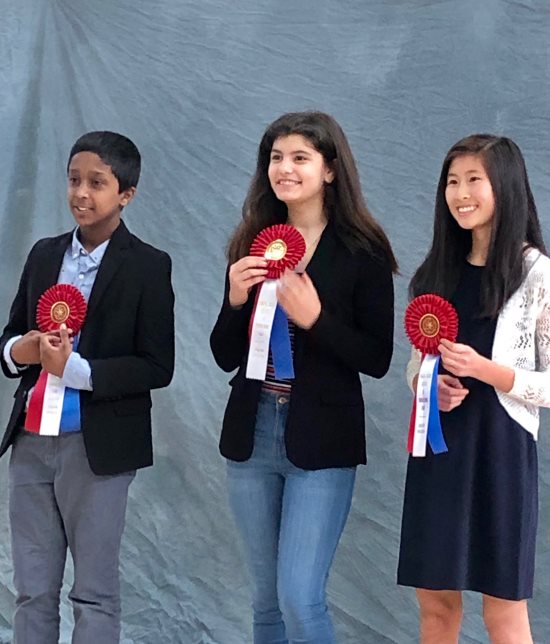
| ||||||
As a finalist, Isabelle will represent Lamorinda in Washington, D.C. the last week of October where she will present her project and compete with the other finalists.
Isabelle's invitation to enter Broadcom was based on the Joaquin Moraga Intermediate School eighth-grader winning first place at the 2019 California State Science Fair, in the physics category as well as the Junior Sweepstakes at the Contra Costa Science Fair, for her project on characterizing musical instruments, and voice, using signal analysis.
A dedicated musician and singer, Isabelle became fascinated by the differences in tones among different brands of pianos, according to the Broadcom Masters website. She had heard experts use different adjectives to talk about those tones: "Diffuse." "Metallic." Even "fat." Those words had meaning, but they weren't very specific. Isabelle decided to see if she could use digital sound processing to get an objective characterization of both a note's frequency and its tone, or timbre. She also wanted the technique to work with other instruments besides the piano. She wondered if the method could work with sung notes as well.
Isabelle started with 10 recordings of the middle C note from three brands of pianos. She used software and an algorithm to break down a musical sound into its different frequencies. Isabelle also got data for the notes' harmonics. Those are overtones that some instruments make when a basic, or fundamental, note is played. Isabelle then went further. She used music from the "mellow" and "bright" settings on her electric piano to design a way to measure a musical sound's tone. She put her results together and got a "color fingerprint" for musical sounds.
Colored circles in the fingerprint stand for a fundamental note and its harmonics. The thickness of each circle is based on the peaks of the different frequencies. Isabelle's method could characterize notes and tones for a piano, guitar and violin. She also found a way to show if a sung note is off on its pitch. "The next step for this project is to build a working prototype smartphone app" to train singers, she says.
Reach the reporter at:
